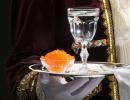Hotel design (25 photos). Where to begin? Hotel room design: norms and rules
When developing a hotel interior project, we pursue three main goals: profitability, ergonomics, and aesthetics.
A team of designers specializing in hotel design, through the use of modern hotel technologies, creates design projects that bring profit to the owner and comfort to guests.
Rational use of each square meter of space helps to achieve the optimal size of the premises, which means it reduces the cost of building a hotel, its equipment and maintenance.
Business technologies in design
To use space efficiently, you need to know in detail how the hotel business works. Fantalis knows everything about hotels, because we not only develop design projects and build them, but also invest ourselves.
What is minimum height beds for easy cleaning? How to comfortably place in the lobby large group guests? How to position the conference room in relation to the kitchen in order to use it as a banquet room? Does the restaurant need a separate entrance from the street for city residents? How to economically regulate lighting? Details like these determine the cost of building and maintaining a hotel, which directly affects its profitability.
Flows of guests and staff, food delivery, cleaning algorithms, safety and, of course, comfort - this and more are planned in the design project to avoid inconvenience in daily work in the future. Knowing all the intricacies of the hotel business and having thoroughly marketing research, you can create a popular and income-generating project.
Specializing in the hotel industry, we don't take the time to get into it from scratch, instead, based on years of experience, we look for the perfect solution within your budget.
Every project requires total immersion. Not everything is measured by money. What matters is what remains after us.
Roman Fantalis,
founder of the company
Convenience and rationality
The well-designed complex is convenient for visitors and staff. Thinking through the logistics of visitors and employees, providing room interiors with what is really necessary, taking care of durability, planning everything taking into account minimum and peak loads - and doing it in such a way that the guest feels comfortable and is not distracted from the purpose of his visit - the key to a comfortable hotel , in demand.
Profitable aesthetics
The hotel interior should be attractive and understandable to its guests. Full disclosure of specific characteristics, the beauty of the things used and the appropriateness of the decor inspire and delight the one who uses these benefits, emphasizing the uniqueness of both independent and chain establishments. In a hotel design project, the aesthetic component serves common goal– making a profit from the accommodation of guests. In order not to waste resources on decorative excesses, it is important to maintain a balance between beauty and functionality.
Durability
Finishes and equipment should be selected that are appropriate for the load and safety standards. When developing a hotel interior design project, we select commercial-grade materials designed for intensive use, vandal-proof, fire-resistant and quick to clean. Knowledge of the market helps us choose what suits the budget, reducing the costs of subsequent operation of the facility.
Step-by-step development of a hotel design project
Both in the interior of a mini-hotel and in a large establishment with a worldwide reputation, there must be recognition, something that affects the client’s emotions. Modern technologies have made the reviews of visitors especially significant, causing increased attention among hoteliers of any scale to the design of the establishment. Aesthetics and functionality are what attract people and encourage them to share their impressions.
The design of a hotel should make it cozy for the target audience. The moderation and laconicism of the hotel's interior, ease of use, as well as the delicate emphasis on the project's idea create harmony between aesthetics and functionality.
You can order design design for any enterprise: from mini-hotels to chain and boutique hotels. The cost and stages of project development are somewhat different for independent and network enterprises.
Chain hotels
We know the standards and brand books of global networks and know how to work under strict regulations. The design project of the hotel is created taking into account all the requirements of the chain, the interior is complemented with elements of local color where this is permissible.
Redesign
For existing hotels and inns in old or historic buildings, we provide redesign services. This is not only a change in appearance (or restoration according to the color passport) and a design project for the hotel’s interiors, but also the modernization of its functionality with full use already existing base.
Independent hotels
Design development is carried out from scratch; in fact, both the design project of the hotel itself and its brand book are created.
Technical task
For third-party designers, technical specifications are written by a hotel technologist; we can compose it ourselves after defining the concept and business planning. The advantage of turning to professionals: our technologists, architects and designers do not need to explain every little detail; they are able to predict many working moments.
It all starts with understanding the target audience.
We will prepare a business plan, it contains a description of the target audience, the purposes of its stay, desires and behavioral characteristics; it is used to draw up technical specifications. The technical specifications describe in detail the requirements for the design of all areas: rooms, lobby, restaurant, conference room, spa, swimming pool, sports complex, children's room, buffet and others. The technical specification defines the functionality of the hotel and describes all the requirements to ensure prompt service of this functionality.
We define:
Who is your client and who are you to them?
What does he need and what can you give?
How to give what he needs using a minimum of funds?
Planning solution
The detailed planning solution is based on the requirements of the technical specifications and takes into account all the nuances of the operation of the future hotel. At this stage of the project, the location and area of various zones, their content are determined, and increased attention is paid to ergonomics. It is also planned to service all elements of the hotel, and distribute service flows.
The placement of furniture plays a decisive role. If it is not selected correctly, it takes up extra space, which directly affects the cost of the hotel. Design is not only focused on beauty, the basis for the development of any project is logic, rational explanation upcoming use of the interior. This way, every item will be in its place, in demand and easy to access.
Are planning:
Rooms and public areas.
Efficient distribution of space.
Ergonomics of interiors using modern technologies and trends in the hotel business (automation tools, transformable furniture, flexible layouts, etc.).
Thoughtful logistics that make the service invisible to guests.
Search for style
While work is underway on the layouts, a search for a style solution for the hotel is underway. It is important to choose a style that demonstrates its purpose and highlights its advantages. We select sketches and references (supporting photographs), from which we create mood boards (a board with images reflecting the general mood). After their demonstration and approval, we make preliminary sketches.
Includes three areas: interior (design of rooms and public spaces), exterior (design of facades), landscaping for urban hotels and landscape design for country hotels (design of adjacent areas).
At the same time, the materials and technologies used in the project are outlined.
Hotel room interior design
If the lobby is the face of the hotel and sets the first impression, then the room is the key to the overall perception. They stay there longer, actively use furnishings, therefore, the shortcomings of the room’s interior are more noticeable.
We think through the interiors so that a person feels comfortable, quickly navigates and easily uses everything he needs, and the staff can service the premises discreetly and quickly. At the same time, the uniqueness of each interior is emphasized by the decor with minimal financial losses.
Local flavor
It is reasonable to emphasize in the hotel interior design project the area in which it is located and the elements of its culture. This can be a noticeable influence in cases where the region is a tool for attracting visitors, or discreet motives (ornaments in the interior and on textiles, colors of decoration, characteristic dishes for regional dishes on the menu).
Aesthetic and comfortable design of the hotel area.
Exterior design that harmonizes the building and the environment.
Hotel interior design that makes the client's life more comfortable.
3D visualization
When the general style is determined and the layouts are agreed upon, the details of the project begin to be worked out. Our specialists create 3D visualization of the territory, facade and interiors of the hotel.
Finishing, FF&E (furniture, utensils, equipment) and decorative items are selected. The result is a detailed design project for the hotel’s interiors and exterior.
All rooms and areas.
Their equipment.
Design presentation
We present the design project, describe the solutions found in detail, and explain. The project is agreed upon with the customer.
Documentation
After approval of the project, further necessary documents are prepared. We provide detailed specifications, which describe the finishing materials and equipment of the hotel, indicating the manufacturer down to the article number. After this, the design and preparation of working documentation phase begins for new hotels. Redesign projects based on an existing building are immediately provided with working documentation for the design project.
From planning to opening, Fantalis carries out all the work involved in creating a hotel. You can only order a design project.
If an ordinary hotel is not what your heart desires, then it’s worth spending time in a chic designer hotel. Fashion designers abandoned clothes and started working on interiors. If you like a certain designer's clothes, why not stay in a room designed by him. Hotel design uses the same design techniques and trends, brands, concepts, materials as clothing design.
1. Diane von Furstenberg – Grand Piano Suite, Claridge’s Hotel, London



Renowned dress designer Diane von Furstenberg began designing the 20 suites at Claridge's Hotel in 2010. Bold color schemes, leopard-print paths, fuchsia-colored sofas and chocolate-colored prints made the interiors simply luxurious. The Grand Piano Suite is one of the rooms the designer worked on. She left her signature here. Cashmere bedspreads and Diana's personal photographs from her travels made the room attractive and cozy. The room features a gleaming black grand piano, marble throughout, and Murano glass accessories.
2. Christian Lacroix – Hotel du Petit Moulin, Paris



The Hotel du Petit Moulin consists of 17 rooms designed by fashion designer Christian Lacroix. They are all different, some with a rustic chic, others ultra-modern, but each has its own story to tell. The hotel is located in the center of Paris, so if you want something fashionable and stylish, you should definitely stop by here, where a cozy cocktail bar awaits. In addition to this hotel, Christian Lacroix took part in the interior design of the Hotel Bellechasse in 2007 and the boutique hotel Le Notre Dame. The latter has 26 rooms, the interior of which is created in an eclectic style meeting medieval and modern, with carpets reminiscent of paving stones, with wallpaper in the form of a cow's skin, with beams and picturesque masterpieces on the walls. All Lacroix hotels are amazing, it is incredibly difficult to choose.
3. Ralph Lauren, villas, Montego Bay, Jamaica



We are all familiar with Ralph Lauren's polo shorts, but is anyone familiar with the villas he designed? The Round Hill Hotel and Villas in Jamaica, where all rooms have ocean views and were designed by Ralph Lauren. The villas have a classic, simple yet luxurious design. Dark wood, patterned fabric upholstery and unity with nature are the main features of their interiors. Everything goes together - the blue of the ocean, which is visible from the rooms, and the sophisticated interior design from Ralph Lauren.
4. Maison Moschino, Milan



The name itself may already say something. Although no one has any idea what this hotel offers. If someone wants to sleep in a ballgown, the hotel will provide such an opportunity. "Maison Moschino" consists of 16 themed rooms, with names such as "Life is a bed of rose petals" (where rose petals are everywhere in the bed, and hang like chandeliers from the ceiling) or "The Sweet Room" (with pillows on the bed stylized as strawberry mousse and cakes). If anyone has trouble falling asleep, they can try the Cloud Room, where there are paper clouds everywhere. If someone wants to have some fun, then they should choose the “Luxury Attic”, a room that replicates the pile of different things in the attic. This quaint hotel will attract everyone's attention!
5. Oscar de la Renta – Tortuga Bay Resort, Punta Cana, Dominican Republic



If anyone wants to live out the dreams of designer Oscar de la Renta, they need to visit the Tortuga Bay Resort in Dominican Republic. The designer conveyed his sensuality and personal style in the interior of the rooms. Wooden furniture combined with Italian fabrics create warm atmosphere and comfort. Modern elements in the interior include a plasma TV, DVD player, and jacuzzi. However, you won’t be bored without them, there are tropical beaches and exotic nature all around.


Karl Lagerfeld didn't just design an entire hotel or suite, he did something more. One of his works can be seen at the Hotel de Crillon in Paris, which will open in 2015, while work is currently underway. If anyone loves chocolate, then in 2010 Karl Logerfeld based his design on this concept. The La Reserve Hotel room features antique furniture, luxurious linens and marble paneling. But Karl was also interested in a project in Macau, China, where the designer was developing the brand of the entire hotel, which will open in 2017.
7. Armani Hotel, Dubai



The hotel is located in the very tall building world of Burj Khalifa. It is considered one of the 10 most stunning design hotels in the world. It has 160 rooms. The design is based on simplicity and elegance that makes you feel like a celebrity. The interior uses classic colors: chocolate, black and cream, creating a modern idea of beauty. In addition, Eramosa stone was used for floor cladding, and wooden panels with stylized zebra skin for the walls. The hotel has 8 restaurants, spa and fitness clubs and the only Armani store in Dubai.
8. Suite by Dior – St. Regis, New York



If anyone wants to enjoy the views of New York and immerse themselves in the world of Dior, this is the place for them. Located on the 12th floor of the hotel, the Dior Suite offers the best of everything. It is made in a classic style, the walls are painted in light grey colour, and the furniture in the Louis XVI style is white with gold elements. Bill Donovan's watercolors in the living room are a much-needed pop of color, bringing color and life to the interior. Dior is present in the form of traditional fashion silhouettes drawn.
9. Bulgari Hotel, Bali
10. Palazzo Versace Hotel, Australian Gold Coast



Donatella Versace worked on the design of the huge palace. Palazzo Versace is known as the first luxury branded hotel in the world. It has 200 rooms and 75 condominiums. Luxurious, stylish and rich - these words accurately convey the decoration of the palace. The hotel has 3 restaurants, a bar, a spa and a gym. Versace's style is everywhere - from the bottles of perfume that guests receive as a compliment upon check-in, to the rich furniture, ceramics and fabrics that were used in the decor of the rooms and lobbies. The entire decoration is based on the Baroque concept, which is recognizable in the golden elements, vaulted ceilings and mosaics. The hotel owns part of the coast, so there is the opportunity to go on a yacht.
Perhaps they cannot compete with luxury, but if possible, they should definitely be visited.
A spacious hotel room at the Grand Hotel Gagra, equipped with panoramic glazing and access to a loggia, consists of two rooms: a living room, a bedroom, and in-room amenities.
The interior of the suite is designed within the framework of the general design concept of the hotel's hotel rooms. This is a unique mix of modern styles and trends in the interior.
The project uses high-tech electrical equipment and lighting devices, laconic color spots and large planes characteristic of minimalism, huge leather sofas, various natural materials or their imitation typical of art deco.
Design of a luxury room in a hotel interior
Wide decorative structures made of gypsum plasterboard and polyurethane along the walls under the ceiling hide behind them elements of load-bearing structures - crossbars that spoiled appearance rooms. The central part of the ceiling is hung on the second level, in which large square lamps are mounted, covered with sheets of white frosted glass, giving soft diffused light.
Inserts of a glossy stretch ceiling, reflecting the interior of the room, create the illusion of second light. On the floor of the living room are slabs of polished Turkish marble, made especially for this hotel.


Comfortable upholstered furniture is trimmed with leather, the color of which is combined with shades of marble and the soft sand color of textured wallpaper. The wooden elements of the doors and furniture details are made in contrast to the overall light color scheme of the room and are supported by a dark floor carpet, similar in shade to the wood of the furniture. A chest of drawers with a minibar inside, which serves as a TV stand, is also made of slabs with a combined color. The frame parts are decorated with dark wood, and the bar facades are decorated with light-colored wood, similar in color to other interior elements.


The design of the luxury bedroom is made in warm colors, reminiscent of the savannah. The floor has sand-colored carpeting, which is pleasant to step on with bare feet when getting out of bed. The bedspread's print is made in the form of a stylized tiger skin.

The niches at the head of the bed are finished with decorative plaster, imitating the pattern and texture of natural sandstone, which is well emphasized by contrasting directional lighting from built-in spotlights. There are elephant figurines on the illuminated shelves. The view of the subtropical landscape from the panoramic windows successfully complements the overall picture.
Bathroom of a luxury room in a hotel

The bathroom is combined, equipped with a shower.

Modern small hotels - mini-hotels - are designed to be similar to those ancient home-based boarding houses with which all of Europe was dotted in the centuries before last. Guests of such small establishments quickly became friends. This included joint lunches and dinners in an elegant dining room, poetry and musical evenings held in the garden, walks and games in the garden. Modern mini-hotels, just like former guesthouses, are chosen by travelers who value home comfort, tranquility and exclusivity. Such guests are disgusted by the noise and bustle of large hotels and are impressed by the calm, almost family-like, way of mini-hotels.
A mini-hotel is determined by its format and concept. Thus, tiny boutique hotels often require no less expensive prices than five-star hotels. Competition in the mini-hotel market is very high. This is especially true for cities attractive to tourists such as Moscow, St. Petersburg and Sochi. Therefore, for any mini-hotel, this is in some way an obligatory part of successful promotion.
Design of a mini-hotel in a classic style

Photo of the interior of the reception area of the Rybinsky mini-hotel
The design of the hotel already at the entrance immerses guests in the atmosphere of a European palace or a luxurious mansion of an aristocrat. Columns, pilasters and paintings on the ceiling can easily lead you to believe that you are in the reception room of a family home of representatives of a noble princely family. The tones in the reception area provide a striking contrast to the chocolate beige surroundings. Saturated ruby shades, having the ability to give an elegant look to everything that seems to be the simplest, in this case help to place accents.

Design of a mini-hotel from the portfolio of Ruslan and Maria Green Studio
In the interior of the hotel, the designers have provided a spacious room for a lounge area. Our experts decided to turn this room into a European living room, where you can organize musical evenings, make appointments with friends and business partners, discuss books you’ve just read or films you’ve seen, and simply enjoy cocktails prepared by a professional bartender.

Interior of a lounge area in a hotel
The lounge, designed to match the interior of the area, is furnished with armchairs with a capitonné effect. A black piano should gather music connoisseurs around it, and a cozy fireplace should attract those who like to tell stories that have long since sunk into the past. Bookshelves built into the walls do not take up almost a centimeter of usable space. There is a minibar in the room, at the counter of which guests can always spend the evening with cocktails, a cup of coffee and conversation.

View of the minibar in the hotel lounge area
Dimmed light and barriers to entry sun rays curtains with lambrequins create a chamber atmosphere in the hotel interior. It is this environment that sets the guest up for relaxation and helps to forget about the noisy metropolis and worries.
– this is an important task for all hotels, because it is by the interior that they are “greeted”, but they are “seen off” rather by the level of service. The interior style that hotels choose for their design, of course, depends on many things: the level and star rating of the hotel, its location, size and number of rooms.
Hotel room may include not only one room (as a rule, this is a bedroom combined with an office), but also 2, 3 or more, if we are talking about a presidential class room. The interior of the room is designed based on its class (from economy class to luxury class and “presidential” rooms). At the same time, the design of a separate room should be in harmony with general style hotels: that is, a combination of hi-tech and classics is unlikely to be appropriate. Designers create hotel room interiors in completely different styles: from classic and modern to country or high-tech.
Perhaps someone will disagree that the style of the interior of a hotel room is of primary importance; for many, the level of service or the cost of the room comes first. However, reputable hotels not only decorate their rooms in the same style, but also try to make each of them completely special. If the hotel is located in the historical center of the city or an ancient building, then the classic interior looks most harmonious. If this is a mini-hotel in the area of high-rise buildings or panel buildings, it is more appropriate to make a more modern interior. Guest rooms, decorated in a modern style, usually occupy a significant part of the hotel area. These rooms are characterized by minimalistic design, high functionality and the use of natural materials in decoration.

It is the location of the hotel that dictates the style of the rooms. The design of hotels even within the same chain can vary dramatically. For example, the design of hotel rooms on the seashore is unlikely to be similar to a room in the center of a metropolis. Hotels high level in the center big cities necessarily have several presidential and luxury rooms. The decor of walls, furniture and accessories in golden or other “rich” colors – for example, purple – is often used here. At the same time, the “rooms for the elite” lift the veil of historical reconstruction - here you can quite feel yourself in another century. Such luxury apartments can contain several bedrooms, a spacious living room with a fireplace, several bathrooms and, of course, a picturesque view of the city.

Various factors are important in the design of a hotel room: footage, color scheme, arrangement of furniture and even the distance between it. It is a competent interior that helps a hotel attract customers, because the condition of the room stock determines how much money the hotel will earn. Also, each hotel has its own technical standards, which the designer takes into account when decorating the rooms, not forgetting the image component of the hotel - for example, focusing on spacious rooms, rich plumbing or furniture. When choosing finishing materials, designers take into account their ease of cleaning and the ability to process them with household products. All materials must be as wear-resistant and fireproof as possible, and the furniture must be durable. For example, vinyl coverings, ceramic tiles and decorative plaster are perfect.

Sometimes designers compete in their originality and creativity, creating unusual and bright hotel rooms. However, there are several general rules, which are usually used in hotel interiors. Plain curtains are selected for colored wallpaper in a hotel room, and colored textiles are used for plain walls. When decorating the walls of mini-rooms (up to 15 sq.m.), designers often use cold and light shades, as they visually enlarge the room, while warm and bright colors can, on the contrary, reduce the space. Zoning using color is used in spacious rooms, but small ones, as a rule, are done in the same color scheme, which makes the room seem more spacious. The shade of walls, furniture and accessories is selected taking into account natural conditions(for example, lighting or the location of the hotel relative to the cardinal directions). For rooms with windows facing south, you can use a neutral or cool color scheme, and on the north side, on the contrary, add more light and warm shades to the room. Calm shades always look advantageous, as they do not irritate and provide guests with conditions for relaxation. The classic color scheme for a hotel room is pastel colors, which make the room not only cozy and bright, but also visually expand the space. In addition, any furniture and accessories - from modern to classic - harmonize perfectly with such a background. Against the backdrop of calm walls, designers place similar shades or, conversely, bright color accents. Creative furniture or original paintings will only emphasize the elitism of the hotel.
An ideal hotel room should combine the comfort and coziness of an apartment with the functionality of an office. That is why experts try to take these subtleties into account when developing a design project. The more reputable the hotel, and the higher its star rating, the richer the decoration looks, the expensive materials and exclusive furniture.






